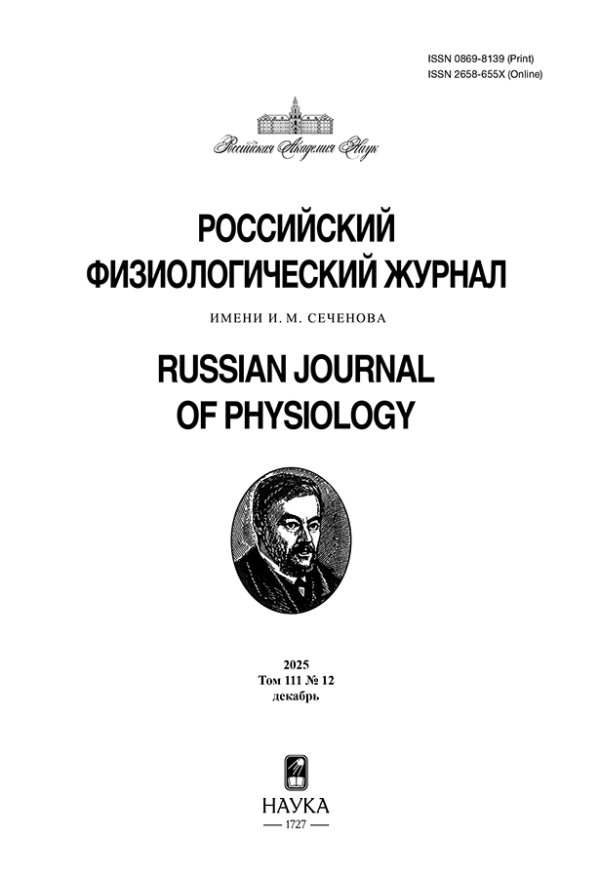Том 109, № 1 (2023)
ОБЗОРНЫЕ И ПРОБЛЕМНЫЕ СТАТЬИ
Эволюционное приобретение мультифункциональности гликолитическими ферментами
Аннотация
Решение вопроса о происхождении жизни на Земле невозможно без понимания того, как возникли химические, функциональные и регуляторные принципы, определяющие клеточный метаболизм, каким образом клетки приобрели свойства, определяющие их эволюцию, и как биологические системы функционируют и развиваются. Настоящий обзор посвящен рассмотрению многогранности функций гликолитических ферментов, экспрессия которых значительно повышена в некоторых типах клеток, например, клетках, обладающих стволовыми свойствами, или клетках злокачественных опухолей. Практически для всех ферментов гликолиза были установлены некаталитические функции, которые необходимы для поддержания высокой скорости пролиферации клеток, их активной миграции и формирования стволового фенотипа. Гликолитические ферменты возникли очень рано в процессе эволюции. Поскольку геномы древних форм жизни имели ограниченное число генов для кодирования всего множества необходимых функций, ферменты гликолиза или продукты катализируемых ими реакций можно было использовать в качестве древних регуляторов межклеточной и внутриклеточной коммуникации. Впоследствии многофункциональность основных метаболических ферментов стала использоваться опухолевыми клетками для обеспечения их выживания и роста. В настоящем обзоре мы обсуждаем некоторые некаталитические функции гликолитических ферментов, а также возможное эволюционное значение приобретения такой мультифункциональности.
 3-17
3-17


Болезнь Альцгеймера: поиск лучших экспериментальных моделей для расшифровки клеточно-молекулярных механизмов развития заболевания
Аннотация
Болезнь Альцгеймера является наиболее распространенным типом деменции, связанным со снижением когнитивных способностей, таких как память и зрительно-пространственные навыки. Недостаточно эффективные методы лечения побудили к созданию экспериментальных моделей на животных, способных воспроизвести патологию болезни Альцгеймера, особенно на предсимптоматической стадии, с целью разработки и изучения превентивных и терапевтических стратегий. На сегодняшний день ни одна из разработанных моделей на животных полностью не отражает весь спектр нейропатологических и когнитивных нарушений, наблюдаемых при развитии болезни Альцгеймера у человека. Тем не менее, каждая созданная модель позволяет в той или иной степени изучить различные аспекты патогенеза заболевания, обеспечивая важное понимание ключевых патологических изменений, которые могут происходить при его развитии. В этом обзоре мы представляем обобщенные данные о нейропатологических признаках развития болезни Альцгеймера и их взаимосвязи с когнитивными нарушениями в рамках тех экспериментальных моделей на животных, которые используются в настоящее время. Также мы приводим в сравнительном аспекте особенности развития нейродегенерации альцгеймеровского типа на примере 2 моделей – генетической и инъекционной, что даст возможность определить оптимальный подход при выборе модели для реализации исследовательских задач.
 18-33
18-33


ЭКСПЕРИМЕНТАЛЬНЫЕ СТАТЬИ
Участие дигидропиримидиназа-подобного белка 2 в регуляции тревожности у человека
Аннотация
Целью исследования было изучение роли дигидропиримидиназа-подобного белка 2 (ДПБ2) в регуляции тревожности у человека и животных. Для этого определяли уровень ДПБ2 в тромбоцитах и слюне и уровень естественных аутоантител к ДПБ2 в сыворотке крови у пациентов, имевших назначение на операцию, а также изучали влияние ДПБ2 на поведение крыс в модели приподнятого крестообразного лабиринта. Пробы крови у пациентов, испытывавших ощущение тревожности в день операции, забирали из вены в пробирки, содержавшие 5%-ный раствор ЭДТ-А в качестве антикоагулянта, выделяли тромбоциты и сыворотку, и методом непрямого иммуноферментного анализа в тромбоцитах определяли уровень ДПБ2, а в сыворотке крови – уровень естественных аутоантител к ДПБ2. В слюне у этих больных также определяли уровень ДПБ2. Результаты исследования выявили повышение уровня ДПБ2 в тромбоцитах (p < 0.05 по t-критерию Стьюдента) и уровня естественных аутоантител к ДПБ2 в сыворотке (p < 0.001) у пациентов по сравнению со здоровыми испытуемыми. Также выявлено увеличение уровня стрессорного гормона кортизола в сыворотке крови у пациентов (p < 0.01). В то же время в слюне у них было обнаружено снижение уровня ДПБ2 (p < 0.01). Внутримозговое введение крысам ДПБ2 вызывало увеличение количества пересеченных квадратов в открытых рукавах лабиринта относительно крыс контрольной группы (инактивированный ДПБ2; p < 0.01 по U-критерию Уилкоксона и Манна–Уитни), что свидетельствует о снижении у них уровня тревожности. Основываясь на повышении уровней ДПБ2 в тромбоцитах и аутоантител к ДПБ2 в сыворотке крови, а также снижении его уровня в слюне при параллельном повышении уровня кортизола в сыворотке у пациентов, испытывавших ощущение тревожности, можно сделать заключение о том, что определение уровня ДПБ2 и естественных аутоантител к ДПБ2 в указанных средах организма может служить показателем адаптации к уровню тревожности у человека.
 34-45
34-45


Цитокин 14-3-3η как новый биомаркер в оценке активности ревматоидного артрита
Аннотация
В настоящее время рутинная оценка активности ревматоидного артрита заключается в определении показателей суставного синдрома, таких как число болезненных и припухших суставов, а также ряда лабораторных показателей. Наибольший интерес представляют последние, к числу которых относится ревматоидный фактор (РФ), антитела к циклическому цитруллинированному пептиду и ряд острофазовых показателей, однако они имеют низкую чувствительность и специфичность, особенно на ранних стадиях заболевания, когда еще есть возможность привести показатели к возрастной норме и достичь устойчивой ремиссии заболевания. Кроме того, некоторые из них весьма дороги и не покрываются обязательным медицинским страхованием. Несмотря на достижения современной науки до сих пор отсутствуют надежные инструменты оценки развития воспалительных процессов в суставах при ревматоидном артрите (РА) в зависимости от степени выраженности патологии и применяемой стратегии лечения. В статье анализирована возможность использования белка 14-3-3η как перспективного маркера оценки активности иммуновоспалительного процесса в суставах. Показана более высокая информативность (по характеристикам точности, чувствительности, специфичности) исследуемого показателя по сравнению с традиционными показателями острого воспаления, такими как скорость оседания эритроцитов и С-реактивный белок.
 46-60
46-60


Реактивность брыжеечных артерий при развитии метаболического синдрома у крыс, получавших диету с высоким содержанием жиров
Аннотация
Потребление избыточного количества жиров может приводить к развитию метаболического синдрома (МС). Однако вопрос о механизмах патофизиологических процессов МС изучен недостаточно. Целью работы было изучить влияние высокожировой диеты (HFD) на реактивность брыжеечных артерий крыс Wistar в условиях in vivo, а также оценить изменение механизмов эндотелийзависимой дилатации артерий при HFD. HFD-группа крыс (n = 25) получала в течение 10 недель HFD, содержащий 50% животного жира, контрольная (n = 25) – стандартный пищевой рацион. Оценивали влияние HFD на эндотелийзависимые и не связанные с эндотелием реакции брыжеечных артерий при действии агонистов в отсутствие и при применении блокаторов NO-синтазы (L-NAME), циклооксигеназы (индометацин) и К+-каналов (тетраэтиламмоний), используя микрофото- и видеорегистрацию диаметра брыжеечных артерий in vivo. Показано, что HFD у крыс приводила к развитию МС, в том числе к дислипидемии, гипергликемии и инсулинорезистентности, росту артериального давления. МС сопровождался нарушением функционального состояния брыжеечных артерий. У крыс HFD-группы, по сравнению с контрольной группой, наблюдалось усиление констрикторной реакции на фенилэфрин на 29%, а также снижение реактивности предварительно сокращенных фенилэфрином сосудов при действии ацетилхолина на 36%. Предварительная инкубация сосудов с блокаторами снижала амплитуду релаксации при действии ацетилхолина, по сравнению с исходной ацетилхолин-индуцированной вазорелаксацией, у крыс HFD-группы: с L-NAME – на 47%, L-NAME и индометацином – на 50%, L-NAME, индометацином и тетраэтиламмонием – на 65%; у контрольной группы – на 69, 72 и 83% соответственно. HFD не оказывала существенного влияния на амплитуду вазодилатации при действии нитропруссида натрия. Таким образом, эндотелиальная дисфункция у крыс, получавших HFD, была опосредована как нарушением NO-зависимых механизмов вазодилатации, в частности уменьшением продукции NO эндотелием, так и снижением эффективности ВКСа. Уменьшение биодоступности NO при HFD частично компенсировалось активацией механизмов эндотелиальной гиперполяризации (опосредованной активностью IКСа и SКСа) в ацетилхолин-индуцированной вазодилатации.
 61-74
61-74


Метилобогащенная диета матери нормализует характеристики цикла сон–бодрствование и сонных веретен у взрослого потомства крыс линии WAG/Rij с генетической абсансной эпилепсией
Аннотация
Ранее было показано, что перинатальная метилобогащенная диета (МОД) матери уменьшает число пик-волновых разрядов (ПВР) и поведенческие симптомы депрессии у взрослого потомства крыс линии WAG/Rij. Эпилепсия и депрессия обычно сопровождаются нарушениями цикла сон–бодрствование. ПВР и сонные веретена являются различными проявлениями таламокортикальной активности. Предполагается, что патологические изменения в таламокортикальной системе, которые приводят к ПВР, изменяют и сонные веретена. Возможно, что МОД матери оказывает положительное влияние не только на ПВР, но и на сонные веретена. Цель данной работы – выяснить, влияет ли МОД матери на цикл сон–бодрствование и изменяет ли характеристики сонных веретен у взрослого потомства крыс линии WAG/Rij. Показано, что у потомства крыс линии WAG/Rij, рожденных матерями, потреблявшими в перинатальном периоде МОД, по сравнению с потомством, матери которого потребляли контрольную диету (КД), значимо увеличивается относительная длительность быстрого сна. У потомства крыс линии WAG/Rij, матери которых потребляли МОД, относительная длительность быстрого сна и число его эпизодов становятся неотличимыми от аналогичных показателей у неэпилептических крыс Wistar. МОД матери увеличивает также число переходов от медленноволнового сна к быстрому сну. Имеется значимая отрицательная корреляция между числом ПВР и длительностью быстрого сна. МОД матери по сравнению с КД уменьшала амплитуду и спектральную плотность мощности сонных веретен. Они становились значительно ближе к амплитуде и спектральной плотности мощности сонных веретен у крыс Wistar. Таким образом, МОД матери нормализует цикл сон–бодрствование и характеристики сонных веретен у взрослого потомства крыс линии WAG/Rij. Мы предполагаем, что этот позитивный эффект связан с уменьшением симптомов абсанc-эпилепсии и коморбидной депрессии, а также с коррекцией активности таламокортикальной системы.
 75-93
75-93


Динамика экспрессии генов костного гомеостаза при развитии асептического некроза головки бедренной кости в эксперименте
Аннотация
Патогенез ряда заболеваний характеризуется нарушением регуляции костного гомеостаза с прогрессирующим развитием остеодеструкции. Вместе с тем ведется активное изучение механизмов, приводящих к смещению баланса остеорепаративного и остеорезорбционного направления остеогенеза. Определение молекулярно-клеточных паттернов, влияющих на динамику изменений костного метаболизма, является значимой задачей в среде широкого круга специалистов. Такие исследовательские работы позволяют предложить алгоритмы таргетного терапевтического воздействия на различные ключевые звенья патогенеза остеодеструкции. В проведенном исследовании выполнен анализ экспрессии генов, участвующих в поддержании костного гомеостаза, а также изучено изменение гистологической картины в экспериментальных условиях в зависимости от времени, прошедшего с момента индукции асептического некроза. Результаты работы отобразили гетерогенность развития остеодеструкции в экспериментах на крысах линии Вистар при хирургически созданном очаге гипоперфузии головки бедренной кости на фоне повышения внутрисуставного давления. В первые две недели развития асептического некроза наиболее активно экспрессировался ген hif1a, который может рассматриваться с позиции триггера дальнейшего нарушения костного метаболизма. При этом экспрессия мРНК генов остеогенеза и остеорезорбции была снижена. Наиболее активные остеолитические процессы по данным электронной микроскопии, а также увеличение экспрессии генов индукции остеокластогенеза наблюдались на 6-й неделе эксперимента. Остеорепаративная направленность метаболизма костной ткани постепенно увеличивалась от начала исследования, и через 2 мес. после индукции аваскулярного некроза головки бедренной кости в образцах определялись активные остеобласты, усиление экспрессии генов костного матрикса и остеобластогенеза. Таким образом, развитие остеодеструкции является крайне гетерогенным процессом с динамически меняющимися в зависимости от времени молекулярными паттернами, определяющими активность сигнальных путей костного метаболизма.
 94-108
94-108


Оптимизация структуры α-гарпинина, блокирующего калиевые каналы KV1.3
Аннотация
Актуальной задачей современной физиологии и фармакологии является получение соединений, обладающих специфичностью в отношении определенных изоформ ионных каналов. В серии статей мы показали, что α-гарпининовая укладка может служить шаблоном для рационального проектирования пептидных лигандов калиевых каналов. В данной работе было использовано молекулярное моделирование, чтобы оптимизировать структуру ранее полученного пептида Tk-hefu-10, селективного блокатора каналов KV1.3, полумаксимальная концентрация ингибирования (ИК50) для которого составляет ≈150 нМ. Расчеты молекулярной динамики комплекса Tk-hefu-10–KV1.3 предоставили информацию о взаимодействии отдельных аминокислотных остатков пептида и канала, а анализ этих взаимодействий позволил предложить аминокислотные замены в структуре Tk-hefu-10 для увеличения его аффинности. Новый пептид Tk-hefu-12 представляет собой укороченный на один остаток аналог Tk-hefu-10 с пятью заменами; экспериментальная проверка активности показала, что его ИК50 ≈ 70 нМ против KV1.3. Кроме того, в структуре Tk-hefu-12 отсутствуют остатки метионина, что позволяет перейти к получению пептидов линейки Tk-hefu с использованием бромциана.
 109-118
109-118


Эффекты семакса в моделях острого стрессогенного воздействия
Аннотация
Острое стрессогенное воздействие вызывает в организме человека и животных каскад нейрохимических реакций, приводящих, в частности, к изменению поведения и повышению толерантности к боли. Важную роль в регуляции реакции организма на стрессорные воздействия играют АКТГ/МСГ-подобные пептиды. Целью представленной работы явилось изучение эффектов аналога АКТГ4–10 гептапептида семакс в различных моделях острого стресса. Было исследовано влияние внутрибрюшинного введения семакса в дозах 0.05 и 0.5 мг/кг на изменения поведения и болевой чувствительности крыс Wistar в моделях прерывистого неизбегаемого электроболевого раздражения и принудительного плавания в холодной воде. Для оценки вовлеченности эндогенной опиоидной системы в эффекты стресса исследовали влияние предварительного введения антагониста опиоидных рецепторов налоксона (1 мг/кг). Использованные стрессогенные воздействия приводили к увеличению болевого порога в тесте “сдавливания задней лапы”, что свидетельствует о развитии стресс-вызванной анальгезии. Кроме того, у крыс, перенесших стресс, наблюдалось снижение исследовательского поведения и возрастание уровня тревожности в тесте “норковая камера”. Как семакс, так и налоксон ослабляли стресс-вызванную анальгезию в модели электроболевого раздражения, но не влияли на величину болевого порога в модели принудительного плавания. Оба исследованных препарата не влияли на поведение крыс в использованных моделях острого стресса. Можно заключить, что семакс ослабляет опиоидную форму стресс-вызванной анальгезии, но не влияет на изменения поведения крыс, перенесших острое стрессогенное воздействие.
 119-135
119-135


ПОПРАВКА
Поправка
 136-136
136-136












